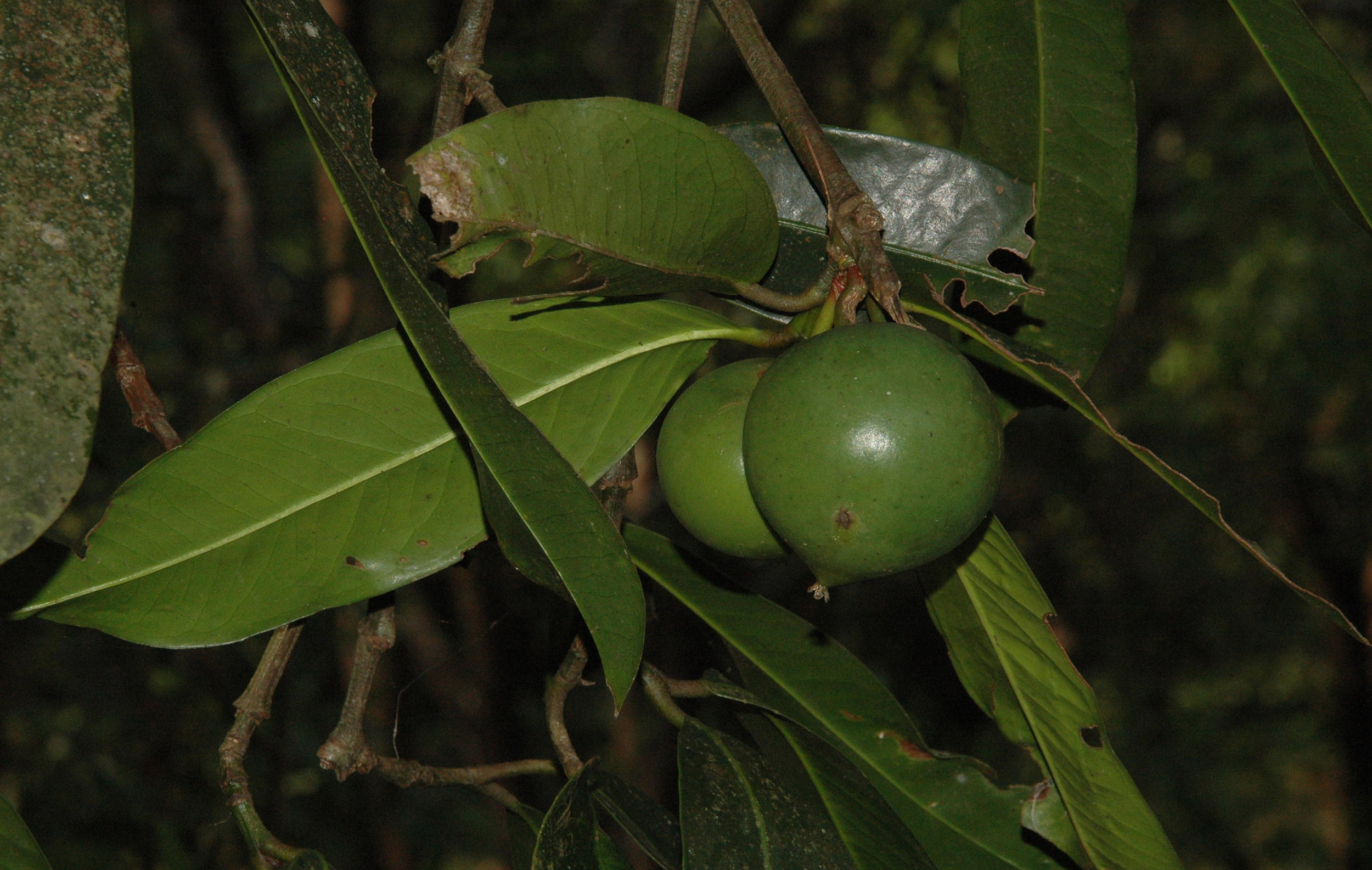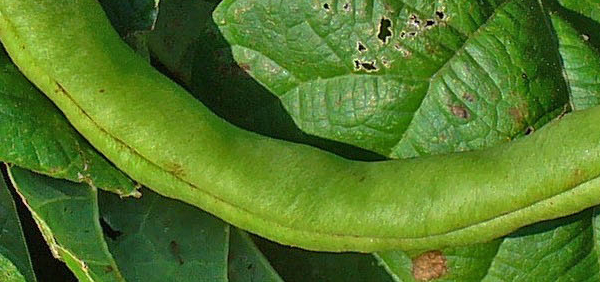amlavetasa :

Garcinia pedunculata, popularly known as bor thekere in Assamese, is an evergreen tree related to the more familiar purple mangosteen(Garcinia mangostana). The tree is endemic to the south-eastern regions of Asia such as parts of Myanmar and north- eastern parts of India.
It is an excellent cardiac stimulant, digestive and laxative. Used in Ayurveda since the time of Charaka, it is also useful in cough, bloating, splenomegaly etc.
Taxonomical Classification
Kingdom: Plantae - Plants
Superdivision: Spermatophyta - Seed plants
Division: Magnoliophyta - Flowering plants
Class: Magnoliopsida - Dicotyledons
Family: Clusiaceae
Genus: Garcinia
Species: G.pedunculata
Allied species:
As per Charaka Samhita sutrasthana 27- Garcinia pedunculata is quite similar to Vrukshamla - Garcinia morella in nature and it is laxative.
VERNACULAR NAMES
Sanskrit: Amlavetasa
English: Indian rhubarb
Hindi: Amlavet , Amantamul.,
Bengali: Thaikal
Tamil: Pulivanci
Malayalam: Nerinnampuli
Varities:
Mentions / Gana
Bhedaniya
Definition
- Amlavetasa means something in Hinduism, Sanskrit, Marathi.
- It is a Sanskrit word referring to Solena amplexicaulis, a species of plant from the Cucurbitaceae (gourd) family of flowering plants, and is used throughout Ayurvedic litrature such as the Caraka samhita.
- Amlavetasa is a Sanskrit word referring to Garcinia pedunculata, a species of evergreen tree from the Clusiaceae family of flowering plants , and is used throughout Ayurvedic literature such as caraka samhitha.
Synonyms
Synonyms in Ayurveda: amlavetas, vedhu, rasamla, viravetas, vetasamla, amlasar, bhedan, raktasar, shankhadravi, mansadravi, pitamula
Amla, Vetasmla, Shakamla, Rasamla, Amlasara - means Sour taste
Alambu, Bheema, Varavetasa, Veeravetasa, Agnikavetasa, Bodhaka, Chukra
Shatavedhi, Sahasrabhit, Vedhaka, Dravi, Bhedani, Bhedi- means laxative action.
Mamsari, Chukraka.
Rasa:
Amla
Guna:
Laghu Ruksha
Veerya:
Ushna
Vipaka:
Amla
Prabhava:
Medhya
Karma:
Depana Hridya Kaphahara Vatahara Vathakaphahara
Garcinia pedunculata, is an excellent cardiac stimulant, digestive and laxative. Used in Ayurveda since the time of Charaka, it is also useful in cough, bloating, splenomegaly etc.
Amlavetasa (Garcinia pedunculata) is best in causing purgation, promoting digestion, downward movement of wind (Anuloma) and balancing Vata and Kapha.
Cultivation:
Propogation:
It is not easy to propagate as the Sohdanei seeds take time to germinate, sometimes taking as long as 6 months. It grows into a medium sized tree. It has short distributed branches with large pale green flowers. The tree starts bearing flowers by Sep-Oct. The harvesting season for this fruit is the end of January. April sees the fruit fully ripe.
Harvesting:
STANDARDIZATION:
The powdered fruit rind was standardized as per pharmacopoeial procedures. The ethanol extract of the fruit rinds was tested for the presence of different phytoconstituents like alkaloid, steroid,flavonoid, tannin,glycoside etc.
Phytochemistry:
1,1-diphenyl-2 picrylhydrazyl (DPPH), 2,2′-Azinobis (3-ethyl benzthiazoline-6-sulphonic acid) liquid substrate (ABTS), trolox, ascorbic acid (AA), hydrogen peroxide (H2O2), Folin-Ciocalteu phenol reagent, nitroblue tetrazolium (NBT), superoxide dismutase (SOD), catalase (CAT), glutathione (GSH), catechin, quercetin, orlistat were obtained from Sigma-Aldrich Chemicals (St Louis, MO, USA). Other chemicals of analytical grade were purchased from Merck Limited (Mumbai, India).
PHARMACOLOGY:
It acts on cough and other respiratory disorders due to its Astringent, cooling and cardiotonic activity.
Parts used for medicinal purpose
Fruit,
,
Dosage:
Juice - 10- 20 ml
Purification:
A sample of fresh GP fruit was collected from Lakhimpur district of Assam, India(situated in between 27°14′–28°16′ North latitude and 94°07′–96°01′ East latitude), in the month of March 2015. The fruits were then sliced into small pieces and seeds were separated. The sliced small pieces of pulps and their seeds were dried up separately. The samples were authenticated by an expert Taxonomist, Department of Botany, Gauhati University. Herbarium was prepared and voucher specimen numbers (Acc. No. IASST/LSD/PM- 17A and IASST/LSD/PM- 17B) were deposited in medicinal and aromatic plant section, Life Sciences Department, Institute of Advanced Study in Science and Technology (IASST), Assam, India.
Substitute:
As per Bhavaprakasha, the legal substitute for Amlavetasa is Chukra.
As per Charaka Samhitha sutrasthana 27- Garcinia pedunculata is quite similar to Vrukshamla- Garcinia morella in nature and is laxative
Controversy:
Some of the controversial drug of garcinia pedunculata are
- Solena amplexicaulis( L) Gandhi (Cucurbitaceae)
- Rheum emodi Roxb. (Polygonaceae)
- Rumex vesicarius L. (Polygonaceae)
- Cissus repens Lamk.(Vitaceae)
- Cissus vitiginea L. (Vitaceae)
- Cayratia trifolia (L) Domin (Vitaceae)
Morphology:
Tall deciduous trees, up to 20 m , with lax crown; Trunk fluted with short, spreading branches; Branchlets obtusely 4-angled or subterete, striate, lenticellate, glabrous; Bark greyish brown, smooth, thick, corky; Leaves simple, opposite; petioles ca. 2-4.5 cm long; lamina ca. 9-40 x 3-15 cm, oblong or oblanceolate, cuneate at base, acute or obtuse at apex, undulate, subcoriaceous or membranous, midrib stout, prominent beneath; secondary nerves 5-15 pairs. Male flowers ca. 2 cm across; in terminal 8-10 flowered short panicles; pedicels slender, ca. 1 cm long; Sepals 4, orbicular, concave, fleshy with scarious margins, subequal; petals ca. 9-11 mm long, obovate-oblong, narrowed and as long as or scarcely longer than sepals; stamens indefinite, truncate, shortly stipilate; anthers 2-celled, cells longitudinally dehiscent, tetragonous, introrse; pistillode columnar-cuneate, slightly angular; stigma peltate, inconspicuously tuberculate. Female flowers solitary, terminal, pedunculate, bracteate, ca. 2 cm across, yellow to green or pale green; pedicels ca. 3 cm long, stout, 4-angled, articulate at base; staminodes 20-30 in 4 fascicles, connate at base; ovary globose, 8-12 locular; stigmas peltate. Berries ca. 6-11 cm in diam., saffron-yellow, fleshy, exceedingly acidic, globose. Seeds 8-10, brown, ovoid, arillate.
Deciduous trees, about 10-20 m tall with oval crown, trunk fluted with short spreading branches, wood moderately hard, yellow, bark dark grayish brown or dark brown, think, somewhat smooth, branchlets often opposite, glabrous, terete, compressed when young, latex resinous, scanty, thick in bark, branches and fruits. Leaves simple, opposite, oblong-obovate, about 10-40 x 4.5-15 cm across, base cuneate or narrowed, margins entire, apex acute to obtuse, membranous, subcoriaceous, glabrous on both sides, midrib stout, impressed above and prominent beneath, lateral veins 10-30, irregular with oblique parallel short veins between about 8-16 mm apart, anastomosing near the margins, veinlets reticulate, petiole slender with raised margins, about 2-5 cm long, exstipulate. Inflorescence axillary solitary, cymes or fascicles. Flowers heterochlamydeous, dioecious, pseudobisexual. Male flowers: axillary, solitary or fascicled, yellow, about 1 cm across, sepals 4, imbricate, orbicular, concave, decussate in pairs, inner pair, narrow, about 9 x 6 mm across, outer pair about 9-10 x 12-13 mm across, persistent in fruit, petals 4, imbricate, obovate-oblong, slightly longer than sepals, stamens indefinite, quadrangular, inserted around lobed mass, rudimentary pistil on an abortive gland on fleshy receptacle, filaments short, anthers peltate, intorse, tetragonous, 2 loculed. Female flowers: terminal, solitary, bigger than male flowers, pale green or yellow, about 2 cm across, pedicels about 3 cm long, with minute staminodes 30-40 in 4 bundles, base connate, filaments arranged in ring shape, ovary superior, globose, 8-12 locular, ovules erect, style short, stigma peltate, stigmatic rays spreading. Fruit fleshy berry, globose, 2-2.5 x 1.5-2 cm across, yellow or orange yellow, smooth, encased by persistent sepals and crowned by stigma. Seeds 8-10, reniform, covered with juicy pulp
Geographical distribution:
Amlavetasa (Garcinia pedunculata) found in north eastern India, and South eastern regions of Asia such as parts of Myanmar.
General Use:
The ripe fruit is eaten cooked or raw, Usually the ripe or raw fruits are sliced, sun-dried and preserved. In the state of Assam, such slices are much valued and used for preparing delicacies like "tenga diya masor jol" meaning Assamese sour fish curry. It can also be prepared with other vegetables, especially fritters made with lentils.
Therapeutic Uses:
Garcinia pedunculata or Sohdanei is a medium sized green fruit which turns yellowish once ripe. Mature fruits range from 8-12 cm in diameter with a fleshy aril which enclose 4-8 seeds.
The complete list of use and indication of Garcinea pedunculata is as follows:
- Hyperglycemia
- Diabetes
- Oxidative stress
- Obesity.
Administration:
hbthe water and made into paste form.
With this
medication, the patient was not advised to follow
any specific Pathya-Apathya during the
scheduled treatment period
Pharmacological:
It acts on cough and other respiratory disorders due to its Astringent, cooling and cardiotonic activity
Toxicity studies:
The results of the acute oral administration of GF extract given at a dose of 2000 mg/kg to the mice indicated no mortality upto 15 days. Similarly by the administration of GF extract at a dose of 2000 mg/kgdidnot show any change in general behavior or lethality. So 1/10th of non-lethal dose (200 mg/kg) was selected for in vivo study.
















